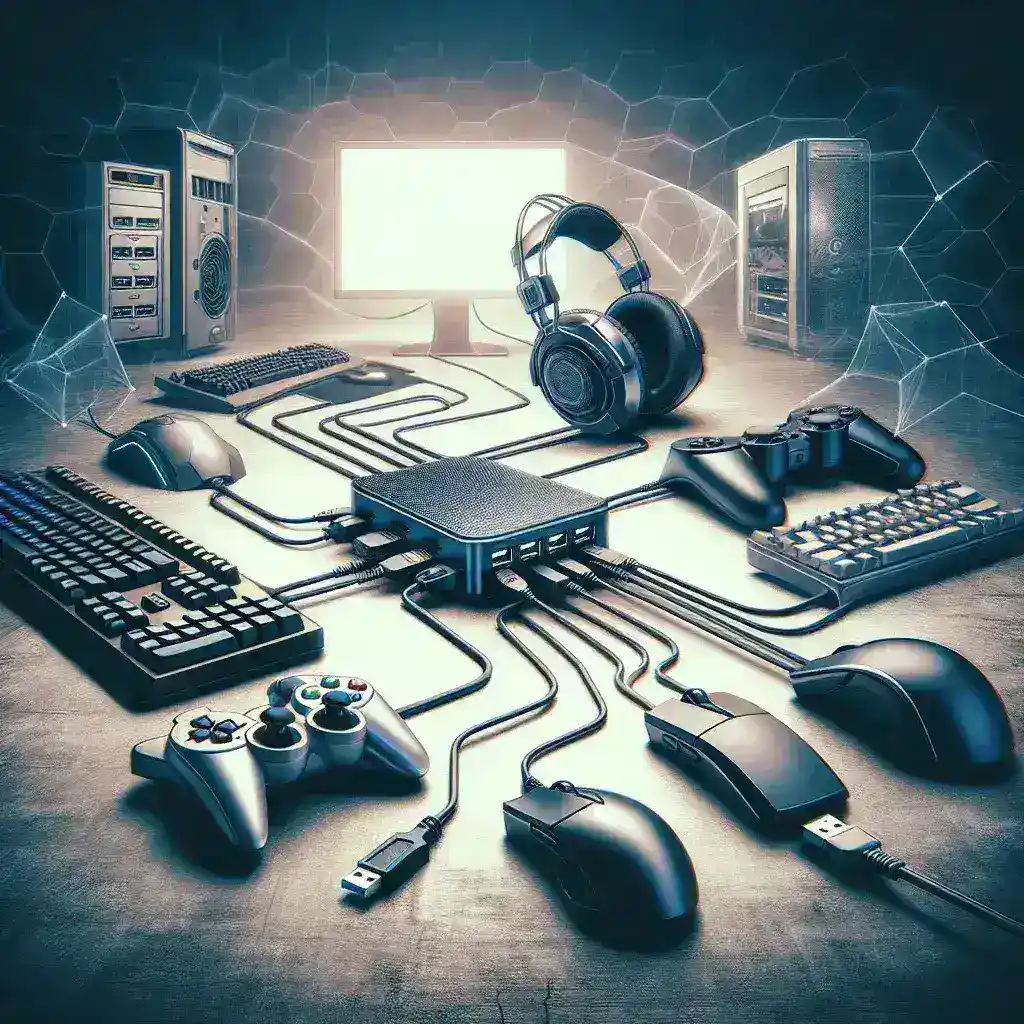In the world of gaming, every millisecond counts. Whether you’re in the heat of an online battle or trying to execute a perfect combo in a single-player campaign, lag can mean the difference between victory and defeat. As gaming technology evolves, players often increase their number of connected peripherals, such as mice, keyboards, headsets, and controllers. This brings us to an important question: Can a USB splitter help reduce lag when using multiple gaming peripherals?
| Aspect | USB Standard | Max Bandwidth | Common Use Cases |
|---|---|---|---|
| USB 2.0 | Up to 480 Mbps | Mouse, Keyboard, Printers | |
| USB 3.0 | Up to 5 Gbps | External Hard Drives, High-speed Peripherals | |
| USB 3.1 | Up to 10 Gbps | High Bandwidth Devices, VR Headsets | |
| USB 3.2 | Up to 20 Gbps | High-speed Data Transfer Devices |
Understanding USB Splitters
A USB splitter is a device that allows multiple USB devices to connect to a single USB port on your computer or gaming console. While USB hubs and splitters serve similar functions, they can have different implications on performance. Here, we’ll discuss how these devices can impact lag and whether they are beneficial for gamers.
Types of Splitters
- Passive USB Splitters: These do not require external power and rely on the power provided by the host device. They are typically less effective for devices that require higher power or bandwidth, like gaming peripherals.
- Active USB Splitters: These come with a power adapter and can deliver more power and better performance. They are recommended for high-demand devices.
The Impact of Bandwidth
When you connect multiple devices using a USB splitter, all of these devices share the available bandwidth. This is crucial to understand, especially when considering performance:
Bandwidth Limitations
Each USB version has a different bandwidth limit, as highlighted in the table above. If you’re using a USB 2.0 splitter, multiple high-bandwidth devices can easily saturate the available bandwidth, causing lag. Gamers generally benefit from using a USB 3.0 or higher splitter to minimize this issue.
Lag: Causes and Solutions
Before diving deeper into how USB splitters affect lag, it’s vital to understand what causes lag in gaming setups.
Common Causes of Lag
- Network Latency: Online gaming depends heavily on internet connection quality.
- Insufficient Bandwidth: Too many devices on the same USB port or network can lead to lag.
- Driver Issues: Outdated or corrupt drivers can increase input lag.
How to Reduce Lag
- Upgrade to USB 3.0 or higher.
- Use active USB splitters for high-demand devices.
- Keep your device drivers updated.
- Use wired connections where possible.
- Limit the number of peripherals connected simultaneously.
Testing USB Splitters in Gaming Scenarios
Real-World Applications
To see if a USB splitter can effectively reduce lag, it’s advisable to test various setups. Here are a few scenarios:
Scenario 1: Single High-Demand Peripheral
Connecting a single gaming mouse to a dedicated USB 3.0 port will yield the best performance with minimal lag.
Scenario 2: Multiple Peripherals Using Passive Splitter
Connecting a keyboard, mouse, and headset via a passive USB splitter might cause performance issues, particularly if the keyboard has LED lighting or if the headset requires more power.
Scenario 3: Multiple Peripherals Using Active Splitter
Utilizing an active USB splitter allows for multiple high-demand peripherals to operate simultaneously without noticeable lag.
Conclusion
While USB splitters can be a practical solution for connecting multiple devices, the type of splitter, the USB standard being used, and the compatibility of your peripherals play essential roles in performance. For gamers, using high-speed, active USB splitters can help minimize lag and ensure that every input is registered with precision.
To sum up, if you’re looking to connect various gaming peripherals without sacrificing performance, opting for a quality USB splitter that supports the necessary bandwidth is the way to go.

